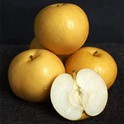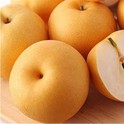Do Brown Pears grow on vines or trees?
As a supplier of Brown Pears, I often encounter this question from customers and enthusiasts alike. It's a fundamental query that not only reflects curiosity about the nature of these delicious fruits but also has implications for understanding their cultivation and sourcing. In this blog, I'll delve into the scientific facts behind where Brown Pears grow, explore their characteristics, and highlight why they are a great addition to your fruit selection.
The Growth Habitat of Brown Pears
Brown Pears, like most pear varieties, grow on trees. They belong to the genus Pyrus, which is a part of the Rosaceae family. Pears are deciduous trees that can reach a height of 10 - 17 meters, depending on the variety and growing conditions. These trees have a distinct branching structure and produce broad, oval - shaped leaves that turn beautiful colors in the fall.
The process of pear tree growth starts with a sapling. After being planted in well - drained soil with plenty of sunlight, the tree begins to establish its root system. In the first few years, the focus is on vegetative growth, where the tree develops branches and leaves. As the tree matures, usually after 3 - 5 years, it starts to produce flowers. These white or pinkish flowers are not only aesthetically pleasing but are crucial for the production of fruit.


Pollination is an essential step in the fruit - forming process. Bees and other pollinators transfer pollen from the male parts of the flower to the female parts, enabling fertilization. Once fertilized, the flower begins to develop into a pear. Over the course of several months, the fruit grows and ripens on the tree.
Characteristics of Brown Pears
Brown Pears have several unique characteristics that set them apart from other pear varieties. One of the most notable features is their color. The skin of Brown Pears can range from a light brownish - green to a deep, rich brown, sometimes with a russeted texture. This coloration is not only visually appealing but also an indication of the fruit's ripeness and flavor.
In terms of taste, Brown Pears are often considered Best Tasting Pear. They have a sweet, juicy flavor with a hint of spiciness or nuttiness, depending on the variety. The flesh is smooth and buttery, making them a pleasure to eat both fresh and in various culinary applications.
Brown Pears are also rich in nutrients. They are a good source of dietary fiber, which aids in digestion and helps maintain a healthy gut. Additionally, they contain vitamins C and K, as well as potassium, which are essential for overall health.
Cultivation and Harvesting
Cultivating Brown Pears requires careful attention to detail. The trees need to be planted in an area with full sun exposure and well - drained soil. Regular pruning is necessary to maintain the shape of the tree, promote air circulation, and remove any diseased or damaged branches.
Fertilization is another important aspect of pear tree cultivation. A balanced fertilizer should be applied at the appropriate times to ensure healthy growth and fruit production. Additionally, pest and disease management is crucial. Pears can be susceptible to various pests, such as aphids and pear psylla, as well as diseases like fire blight. Integrated pest management strategies, including the use of natural predators and organic pesticides, are often employed to protect the trees.
Harvesting Brown Pears is a delicate process. They are typically harvested when they are mature but still firm. Picking the pears at the right time is essential to ensure optimal flavor and texture. Once harvested, the pears can be stored in a cool, dry place to continue ripening.
Uses of Brown Pears
Brown Pears are incredibly versatile fruits. They can be enjoyed Fresh Pear right off the tree or incorporated into a wide range of dishes. In salads, their sweet and juicy flavor pairs well with bitter greens, nuts, and cheese. They can also be used in baking, such as in pear tarts, pies, and cakes. The buttery texture of the pears adds a delicious element to these baked goods.
In addition to culinary uses, Brown Pears can be used to make jams, jellies, and preserves. Their natural pectin content makes them ideal for creating thick, flavorful spreads. They can also be poached in wine or syrup for a decadent dessert.
Why Choose Our Brown Pears
As a supplier of Brown Pears, we take pride in offering the highest quality fruits. Our pears are grown using sustainable farming practices, ensuring that they are not only delicious but also environmentally friendly. We carefully select the best - tasting varieties and harvest them at the peak of ripeness to guarantee the best flavor and texture.
Our commitment to quality extends to our packaging and shipping. We use state - of - the - art packaging materials to protect the pears during transit, ensuring that they arrive at your doorstep in perfect condition. Whether you are a retailer, a chef, or an individual looking for the Sweet Pear to enjoy at home, we have the perfect solution for you.
Contact Us for Procurement
If you are interested in purchasing our Brown Pears, we would love to hear from you. Whether you need a small quantity for personal use or a large order for your business, we can accommodate your needs. Our team of experts is ready to assist you with any questions you may have and guide you through the procurement process. We offer competitive prices, flexible delivery options, and excellent customer service.
References
- "The Pears of New York" by Ulysses Prentiss Hedrick.
- "Fruit Growing: Pear" from the Royal Horticultural Society.
- "Botany of Fruit Trees" by Jules Janick.





